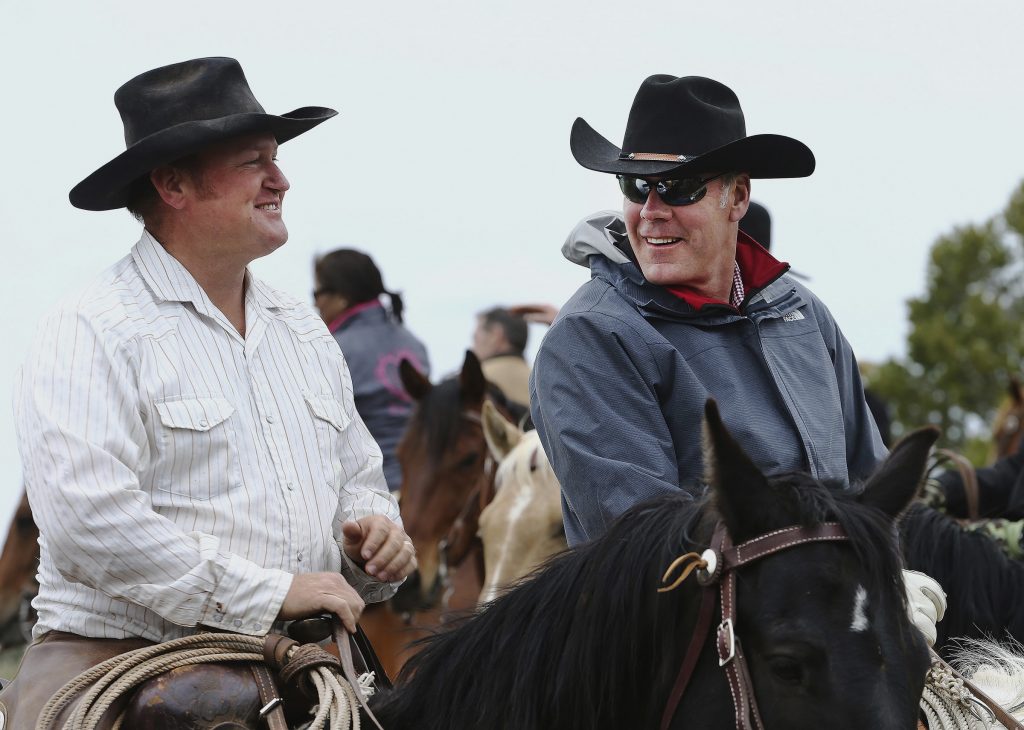
Utahns can submit their opinion on the controversial Bears Ears National Monument beginning May 12, according to a press release. Comments may be submitted online or by mail to Monument Review, MS-1530, U.S. Department of the Interior, 1849 C Street NW, Washington, DC 20240.
The public comment process began following U.S. Interior Secretary Ryan Zinke’s visit to Utah this past week. In a four-day listening tour starting May 7, Zinke met with San Juan County community members, government officials, state offices and the Bears Ears Inter-Tribal Coalition, according to a press release on behalf of the secretary.
Zinke’s tour comes as a result of the April 26 presidential executive order that called to review all national monuments created after Jan. 1, 1996 that are over 100,000 acres in order to ensure each designation conforms to the policies in the Antiquities Act. Bears Ears is the first on his list of visits.
Bears Ears, located in southeastern Utah, was designated a national monument Dec. 28, 2016. While supporters say the monument protects the land, others feel the increased tourism to the area does more damage to Bears Ears than good.
Lifetime San Juan County resident Jami Bayles, president of the Stewards of San Juan County, told the Daily Universe she saw an immediate impact of the monument, with an increase of people coming to the area just days after it was created. She expressed concern about the effects this has on the residents and on the land, along with her frustration of feeling the locals were not given a voice in this monument designation.
“We’re not anti-monument. We just don’t agree with what the process was or how that specific one was done, and so we would like have it rescinded completely and have almost kind of a do-over, ” Bayles said. “Let’s start from scratch and have everybody be at the table instead of just certain groups and meetings behind closed doors and lies and propaganda. Let’s start over.”
Zinke began his tour by meeting with Utah Gov. Gary Herbert and Utah’s Senators Orrin Hatch and Mike Lee, according to a press release. Lee’s Communications Director, Conn Carroll, said Lee stressed the need to rescind the Bears Ears Monument due to the outcry from San Juan County residents as well as constitutional problems with the process of how the monument was created in the first place.
“We very much hope that in the next 45 days, as per the executive order, that Zinke will recommend to President Trump that the Bears Ears monument is fully rescinded,” Carroll said.
According to Herbert’s spokesperson and deputy chief of staff Paul Edwards, Herbert met with Zinke to talk through the complexities the level of protection the Bears Ears area needs and the most effective way to protect it while still providing access to the land.
Edwards said the governor and Zinke had multiple meetings over the course of Zinke’s visit, including during a three-hour helicopter tour of Bears Ears and a few hikes of the area.
Edwards said he was “very impressed” during all of his interactions with Zinke.
“He came to this with a very open mind,” Edwards said. “He’s a very analytical individual. He asked very tough and guided questions.”
John Andrews, Chief Legal Council and Associate Director of the Utah School of Institutional Trust Lands Administration, also met with Zinke on the day he arrived. Andrews said he had no opinion on the monument designation of Bears Ears. His concern was about the 110,000 acres of state school trust lands located within the Bears Ears National Monument.
“We discussed (with Zinke) the desire of our agency to, when the dust settles, trade all of the school trust lands that are in the Bears Ears out of that area — which of course is sensitive conservation area — for other more usable lands somewhere else in the state,” Andrews said.
Trust lands are parcels of land in Utah granted by Congress to be used to support 12 state institutions — primarily public schools, but also state hospitals and universities, according to the Trust Lands Administration website.
Andrews said a land exchange this large would take a few years and typically requires a separate act of Congress. He said despite this, the monument would not have a significant effect on Utah’s education system.
Zinke also met with the Utah Department of Heritage, according to Communications Director Josh Loftin. Edwards, who was present at the meeting, said Loftin presented on the archaeological sites present in the Bears Ears area and provided maps on what had been surveyed. They discussed whether a national monument designation would help bring more awareness and resources, or if the attention would lead to desecration and other negative effects.
Zinke also met with the Bears Ears Inter-Tribal Coalition, which includes members of leadership from the Hopi Tribe, Utah Navajo Chapter of Oljato, Navajo Nation Council, Ute Indian Tribe and Zuni Tribe.
This was the first time Zinke met with the entire coalition, according to a press release. The press release said they discussed issues relating to management of public lands, the monuments under review and sovereignty.
“The Secretary maintained his commitment to working with the tribes and local communities during the review,” the press release said.
Bayles said Zinke talked to local community members in San Juan County in addition to officials. She said she and other citizens gathered with welcome signs for the interior secretary as he drove into town and expected to wave to him as he passed by. Instead, Zinke turned his car around after passing and stayed for about half an hour to shake everybody’s hands and talk with them.
“He wanted to genuinely talk to the people that live here and the different types of families, not just the Navajo or the Ute, but the ranchers and educators and everybody in between,” Bayles said.




